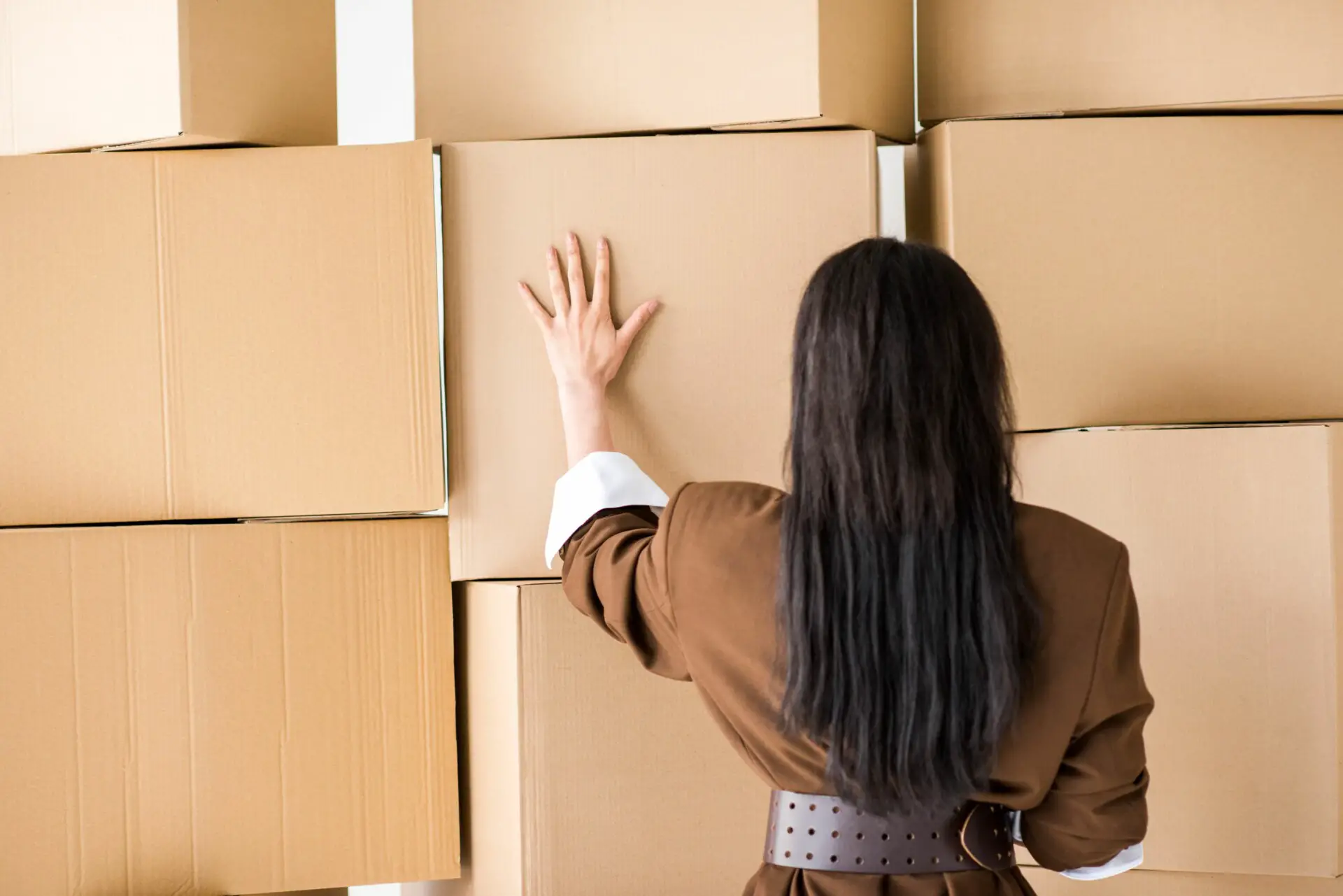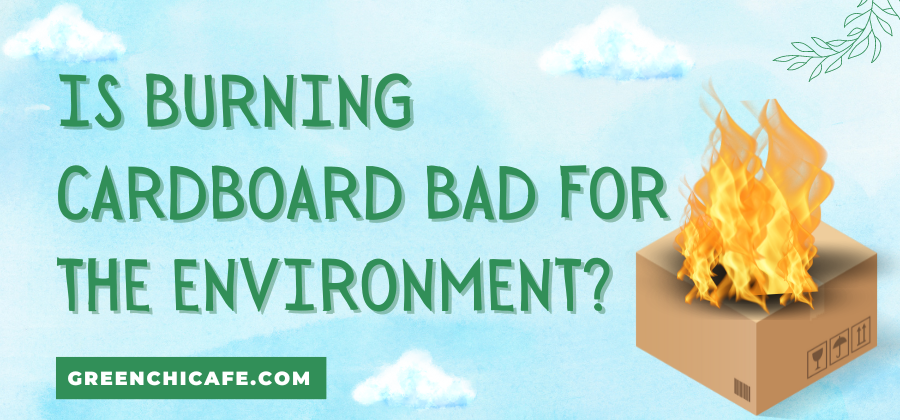Burning cardboard generates concerning air pollutants.
While less toxic than plastics, the chemicals released still degrade air quality and can start wildfires.
Understanding disposal impacts informs sustainable choices.
Is Burning Cardboard Bad for the Environment?

Yes, burning cardboard is detrimental to environmental and human health due to the harmful chemicals and air pollutants released, including carbon monoxide, dioxins, and particulate matter.
Even though cardboard is biodegradable, incineration side effects make it an irresponsible disposal choice.
Key Points
- Cardboard burning emits carbon monoxide, particulates, and other irritants.
- It produces more pollution during dry conditions conducive to wildfires.
- Recycling cardboard is better for the environment than burning it.
What Air Pollutants Are Released When Burning Cardboard?
Combustion of cardboard emits carbon monoxide, carbon dioxide, and trace dioxins and furans – toxic even in small amounts.
Burning cardboard also releases particulate matter hazardous to breathe.
While metal-bearing plastics produce worse emissions, cardboard burning still poses respiratory risks and contributes to smog formation.
Pollution degree depends on burn conditions and cardboard composition.
Nonetheless, impacts exist.
Under What Conditions Is Cardboard Most Hazardous to Burn?
Burning cardboard is most detrimental in arid climates prone to wildfires.
Dry weather and wind escalate fire risks, while smoke travels farther to populate areas downwind.
Hazard also increases with cardboard volume burned, as more pollution is emitted.
Conversely, small controlled campfires have less impact.
Either way, burning cardboard is discouraged in favor of recycling.
What are the Dangers of Inhaling Smoke From Burned Cardboard?
Cardboard smoke mainly contains small particulates, carbon monoxide, and other irritants.
Particulates inflame airways and lungs when inhaled.
Carbon monoxide restricts oxygen absorption.
Prolonged exposure to cardboard smoke exacerbates respiratory conditions like asthma.
Sensitive groups including children and seniors are at the highest risk.
While less toxic than plastics, cardboard smoke inhalation still harms health.
Does Burning Cardboard Produce Comparable Emissions to Wood?
Burning wood emits higher levels of pollutants like nitrogen oxides.
However, cardboard and wood smoke both release particulate matter, carbon monoxide, and other concerning gases.
Due to additives, burning cardboard produces more sulfur dioxide and hydrogen chloride gas than wood.
Cleaner-burning seasoned firewood has lower emissions overall compared to discarded cardboard.
Can the Public Legally Burn Cardboard in Most Areas?

Laws prohibiting trash burning usually include cardboard among banned materials.
Many urban and suburban communities prohibit open burning completely.
However, some rural areas allow agricultural burning.
Verifying local ordinances is important, as illegal burning can prompt citations or other penalties.
Between pollution concerns and codes, burning cardboard on unauthorized properties is typically prohibited.
Are There Special Equipment or Permits For Safe Cardboard Burning?
Some municipalities offer permits for approved agricultural or land management burning.
This requires specialized incinerators and equipment to control emissions.
Commercial pyrolysis converters also transform discarded cardboard into biochar through high-heat decomposition devoid of oxygen.
However, individual public burning lacks safeguards to control pollution risks.
Is it Okay to Burn Cardboard?
No, burning cardboard is detrimental and should be avoided.
While composed of renewable materials, burning cardboard emits hazardous pollutants including carbon monoxide, dioxins, particulate matter, and other irritants into the air.
These emissions contribute to environmental and respiratory health hazards.
Recycling cardboard is a far better option than incineration.
Is it Better to Burn Cardboard or Landfill?
Landfilling cardboard is safer for air quality and public health than burning, which releases toxic emissions.
However, recycling cardboard is ideal as it reclaims valuable fibers and minimizes landfill additions.
Responsibly managed modern landfills also collect methane for energy production.
Neither burning nor landfilling is optimal, but landfilling cardboard has fewer environmental drawbacks than incineration.
Is Breathing in Burning Cardboard Bad?
Yes, inhaling the smoke from burning cardboard poses health risks.
The smoke contains tiny particulates, carbon monoxide, and other irritants that inflame airways and restrict oxygen absorption in the lungs.
Prolonged exposure can worsen asthma and other respiratory conditions, especially in children and seniors.
Cardboard smoke inhalation is best avoided through alternative disposal means.
How Does Burning Cardboard Affect the Environment?
Burning cardboard harms the environment by generating air pollution containing particulates, carbon monoxide, dioxins, and other hazardous chemicals.
It contributes to smog formation and diminished air quality.
The particulates also settle into toxic ash residue.
In dry conditions, burning cardboard can also inadvertently ignite destructive wildfires.
Overall, incinerating cardboard has considerable negative environmental effects.
Key takeaways:
- Burning cardboard generates harmful emissions contributing to air pollution and health hazards.
- While biodegradable, incineration side effects make it an irresponsible disposal choice.
- Recycling cardboard or using responsibly designed decomposing equipment provides better environmental solutions than open backyard burning.
FAQ
Is it Okay to Burn Cardboard Occasionally?
While occasional small burns have less impact, frequent backyard burning of any material including cardboard contributes to cumulative air pollution and health issues over time. Recycling is better.
Can Burning Cardboard Start a Wildfire?
Yes, burning cardboard, especially in dry conditions with wind, can easily ignite surrounding materials and spread into a dangerous wildfire. Even small recreational fires warrant caution.
Does Burning Cardboard Produce Toxic Ash?
Potentially yes, as the smoke contains small particulates that settle as toxic ash. Dioxins and furans in the ash residue are especially concerning. Proper ash disposal using masks and gloves is important.
What is an Environmentally Friendly Alternative to Burning Cardboard?
Recycling cardboard through municipal pickup or commercial recycling centers enables environmentally sound reuse. Composting cardboard is also an eco-friendly choice as it breaks down naturally without burning.
At GreenChiCafe, we are passionate about protecting the natural world and sharing knowledge that cultivates more sustainable lifestyles.
Please check out our website for more content about caring for our planet and living eco-consciously.
